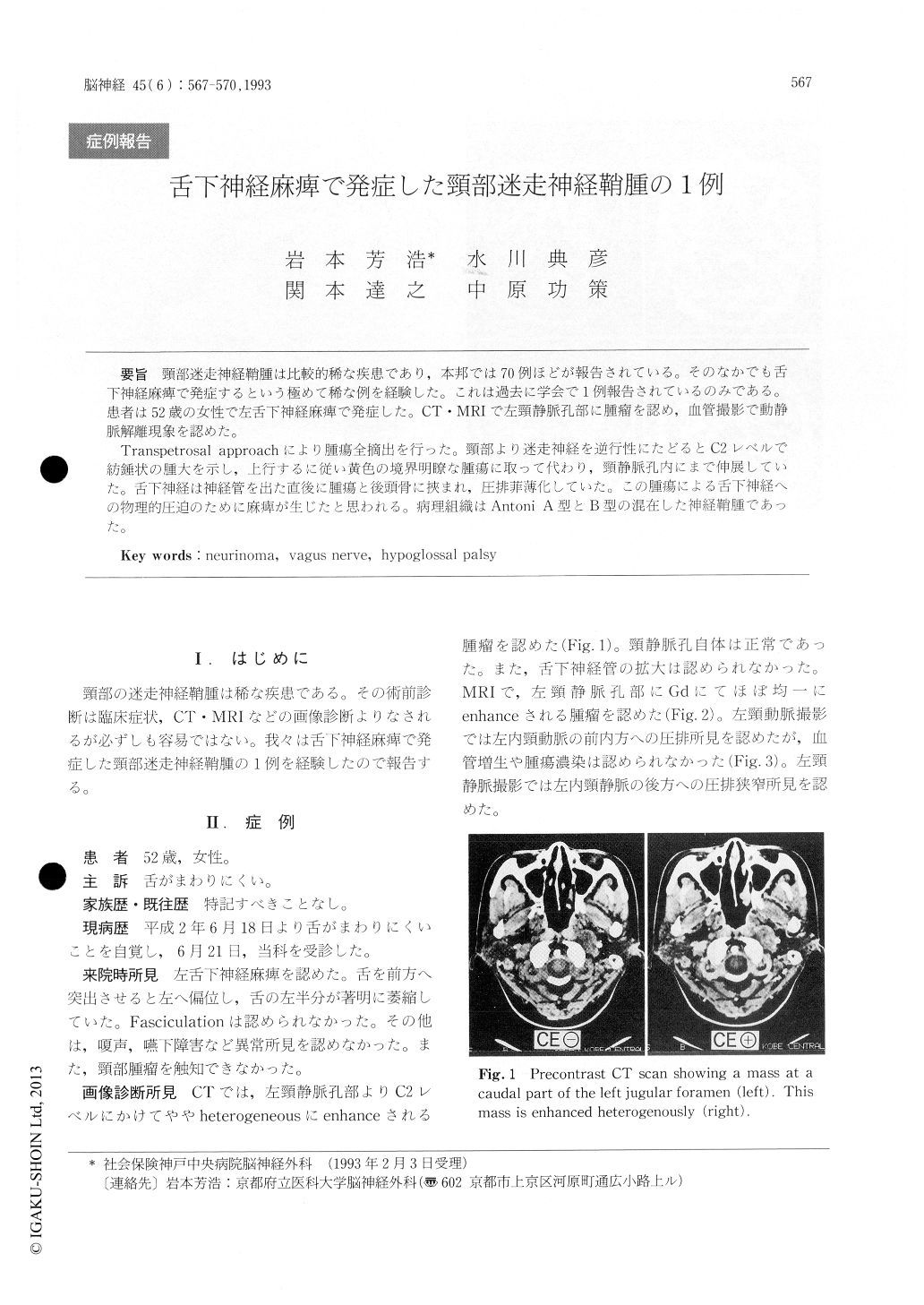Japanese
English
- 有料閲覧
- Abstract 文献概要
- 1ページ目 Look Inside
頸部迷走神経鞘腫は比較的稀な疾患であり,本邦では70例ほどが報告されている。そのなかでも舌下神経麻痺で発症するという極めて稀な例を経験した。これは過去に学会で1例報告されているのみである。患者は52歳の女性で左舌下神経麻痺で発症した。CT・MRIで左頸静脈孔部に腫瘤を認め,血管撮影で動静脈解離現象を認めた。
Transpetrosal approachにより腫瘍全摘出を行った。頸部より迷走神経を逆行性にたどるヒC2レベルで紡錘状の腫大を示し,上行するに従い黄色の境界明瞭な腫瘍に取って代わり,頸静脈孔内にまで伸展していた。舌下神経は神経管を出た直後に腫瘍と後頭骨に挾まれ,圧排菲薄化していた。この腫瘍による舌下神経への物理的圧迫のために麻痺が生じたと思われる。病理組織はAntoni A型とB型の混在した神経鞘腫であった。
Cervical vagus neurinoma with hypoglossal palsy is extremely rare and only one case has been report-ed so far in Japan.
A 52-year-old female complained of dysarthria. She has hypoglossal palsy with left-deviated tongue and the left half of her tongue was markedly atro-phic. Cervical mass was not palpable and she had no other complaint such as hoarseness or dysphagia.
CT scan and MRI revealed a tumor at a caudal part of the left jugular foramen. A hypoglossal canal was intact. Cerebral angiography demon-strated arterio-venous dissociation but vascular formation or tumor stain was not revealed.
The tumor was totally removed by transpetrosal approach. The vagus nerve became thicker above C2 level and changed into the yellowish tumor with clear margin. The hypoglossal nerve was com-pressed between the tumor and an occipital bone. The authors think this is why hypoglossal palsy appeared. Histologically, the tumor was neuri-noma.
Clinical symptoms, diagnosis, and treatment were discussed.

Copyright © 1993, Igaku-Shoin Ltd. All rights reserved.


